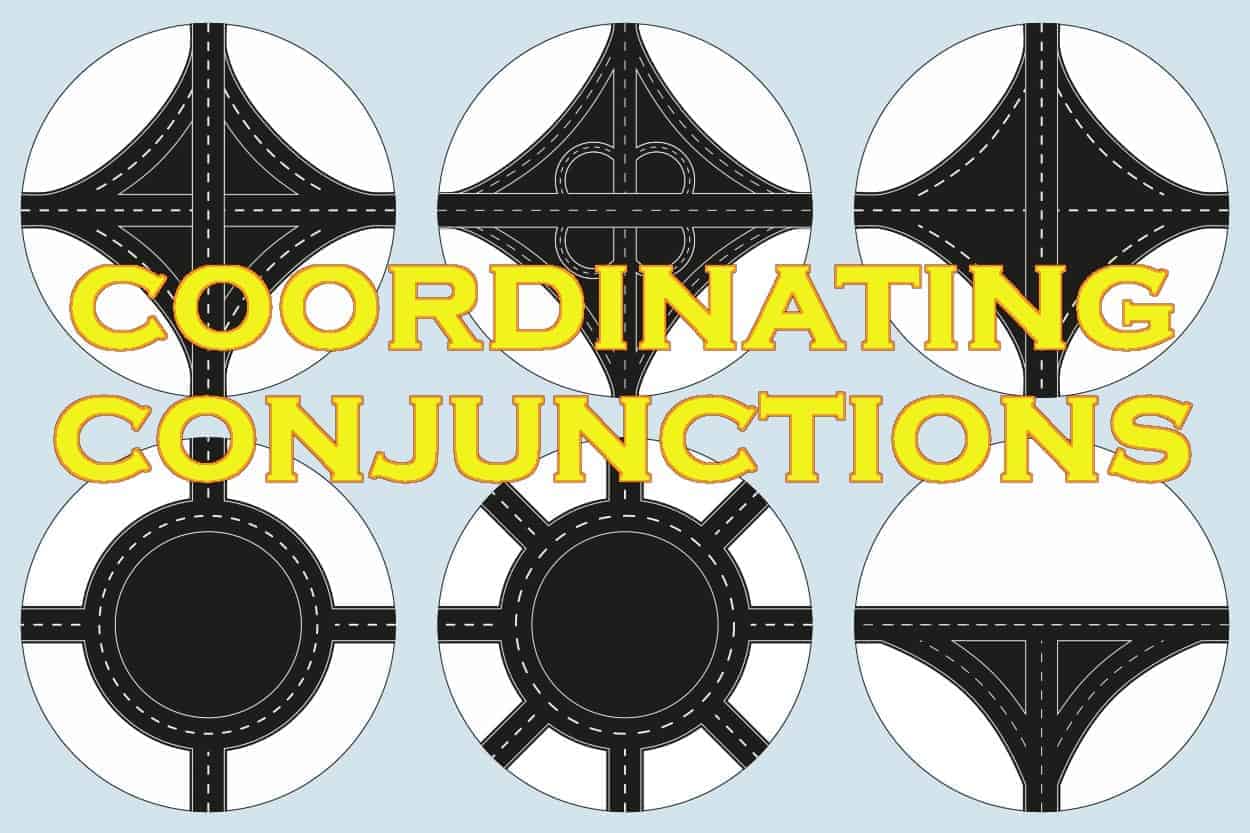My most vivid memory of being exposed to conjunctions was in my eighth-grade writing class with Mrs. Sollers. We made booklets where we wrote out the rules and drew pictures to explain them. I probably remember this so well because I love to draw. Thanks to that project, I became familiar with FANBOYS, an easy mnemonic phrase to quickly recall all seven of the coordinating conjunctions (and some of the comma rules to go with them).
Got that memorized? We’ll get to that in just a minute.
What Is a Coordinating Conjunction?
Essentially, coordinating conjunctions are words that join two different elements that have equal grammatical importance. For instance, a coordinating conjunction could be used to combine two phrases, two nouns, two independent clauses, or two verbs. Easy enough, right?

List of 7 Coordinating Conjunctions: FANBOYS
As we talked about earlier, there are seven coordinating conjunctions. This is the complete team list of coordinating conjunctions:
- For
- And
- Nor
- But
- Or
- Yet
- So
Do you see how the first letter of each coordinating conjunction spells out FANBOYS? You can rearrange them to create whatever mnemonic phrase you please.
Writing a Sentence Using Coordinating Conjunctions
The seven coordinating conjunctions link two clauses, phrases, sentences or words of equal importance. The elements that the conjunctions link should be similar. For example, a coordinating conjunction can join two modifiers, two nouns, two verbs or two independent clauses.
The main concept to keep in mind is that each element on either side of the coordinating conjunction bears the same weight in a sentence; one part is not more important than another. A conjunction that joins two elements that are not of equal importance is a subordinate conjunction, which will be discussed in a later blog.
- High-quality writers and editors are essential.
- I love to write, but I also love to draw.
Using a Comma With Coordinating Conjunctions
A comma appears before a coordinating conjunction when it links two independent clauses. This means that each clause can stand alone by itself as a sentence.
- Without conjunction: SEO helps businesses rise in search engine rankings. Companies provide custom SEO content.
- With conjunction: SEO helps businesses rise in search engine rankings, and companies provide custom SEO content.
If a non-essential element precedes the conjunction and is offset by commas, then a semicolon is usually the best choice to use before the conjunction instead of another comma.
- Phil, who is a member of a band, is a fantastic musician; yet he uses sharp accounting skills to make sure all the writers get paid.
A comma should not appear between two objects, subjects, verbs or complements that are joined by a coordinating conjunction.
- Nouns: Greg and Matt are really just kids at heart.
- Verbs: I ate and wrote before I picked up my kids from school.
- Objects: I submitted some articles to Amber and Cara this morning.
Do not put a comma after a coordinating conjunction unless it is followed by a non-essential element.
- Without non-essential element: Abby knows a lot about grammar, and she makes sure the writers get quality feedback.
- With non-essential element: Abby knows a lot about grammar, and, in case you didn’t know, she makes sure the writers get quality feedback.

Starting a Sentence With Coordinating Conjunctions
It is grammatically acceptable to begin a sentence with a coordinating conjunction. However, this is generally frowned upon in more formal writing, such as academic papers, professional blogs or websites, so it’s a good idea to steer away from using it this way. If you must use a coordinating conjunction at the beginning of a sentence, do not put a comma after it.
- I woke up early to write some articles. Yet I still didn’t submit my work until right at the deadline.
Coordinating Conjunctions: 7 Essential Elements to Writing
It is pretty much impossible to write in the English language without using one of the seven coordinating conjunctions one way or another. What was the mnemonic phrase you learned in school in order to remember each of the seven coordinating conjunctions? What is the most confusing part about using coordinating conjunctions? Let me know in the comments below!


Leave a Reply